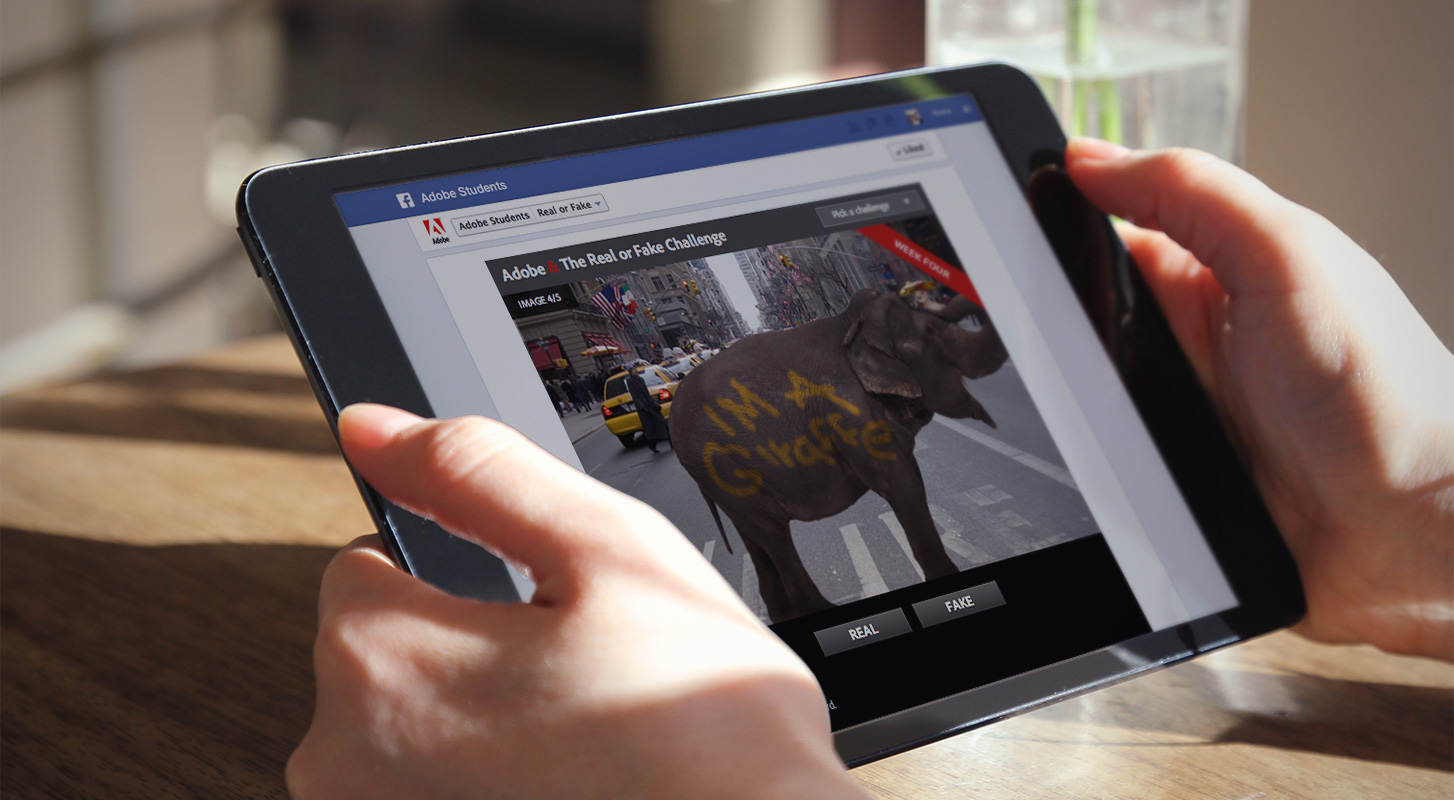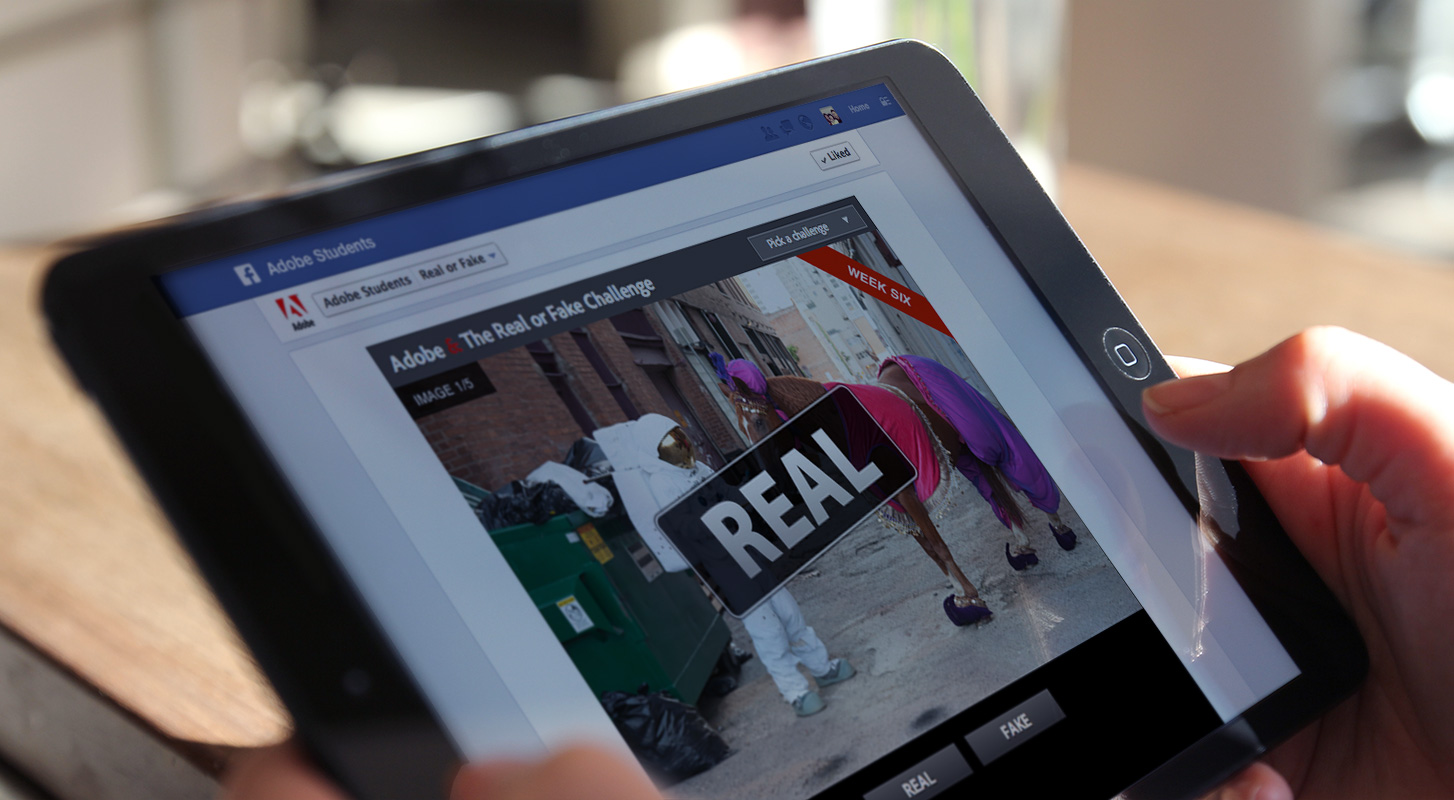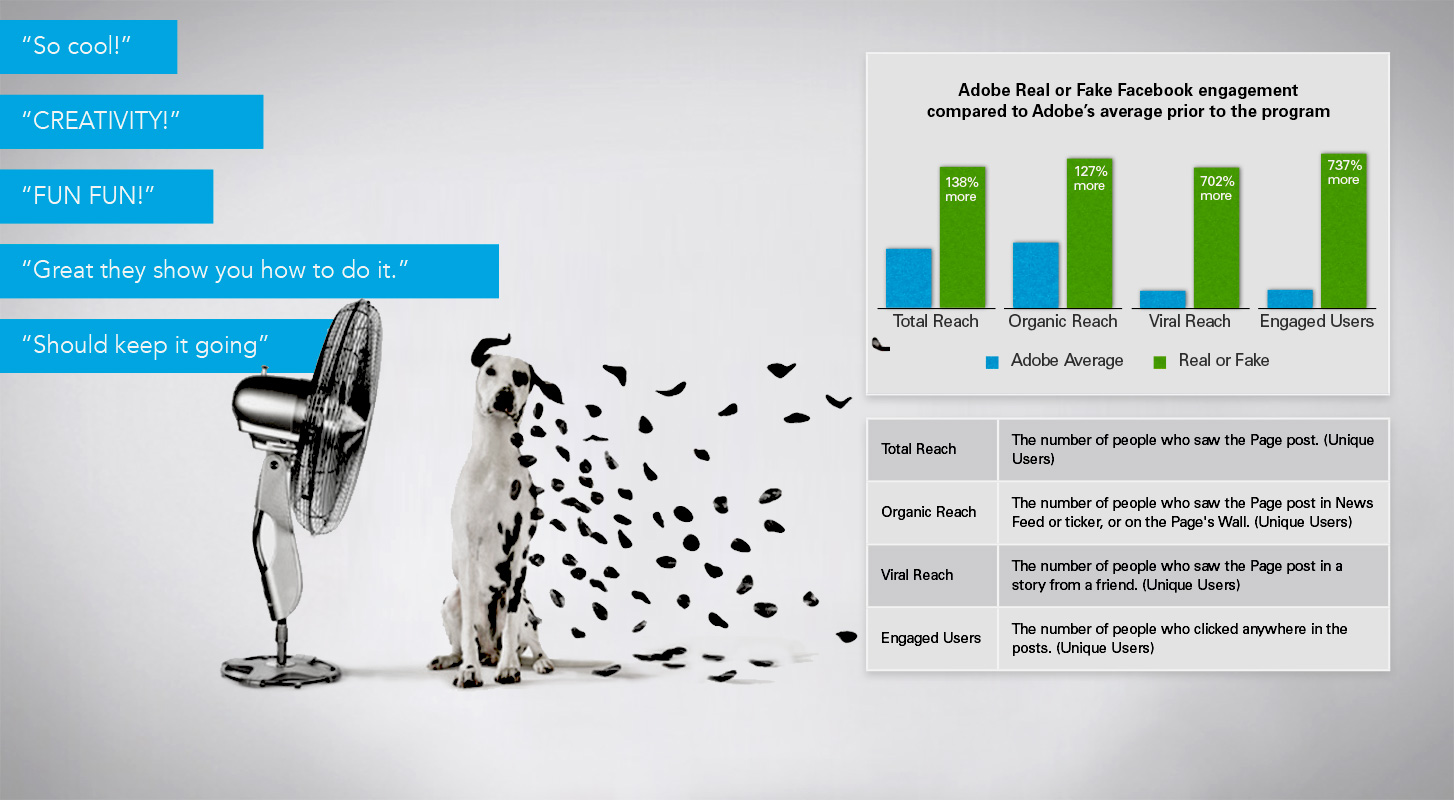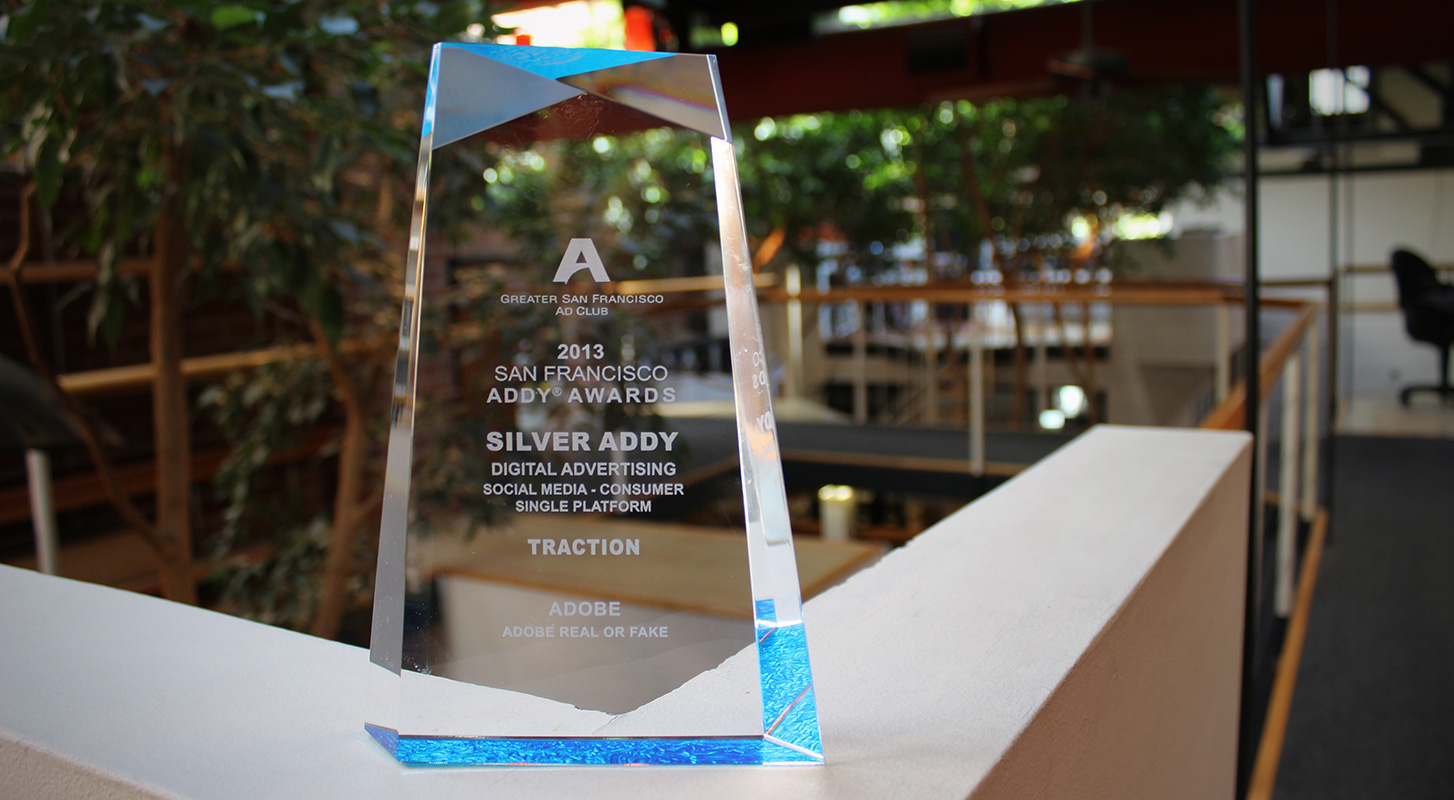Adobe Real or Fake





College students have always been a key strategic audience for Adobe. However, based on our research, awareness of Adobe’s full suite of products varies. Our challenge was to develop a campaign to increase awareness of Adobe Creative Suite, Creative Cloud, and promote the compelling 80% student discount.
But reaching these students was no easy task. We know students are bombarded with media each day. We needed to engage students in a way that would be fun, show them what they could do with Adobe, and let them know about the discount. So we launched ‘Real or Fake’, a game on the Adobe Student Facebook Page.
The game challenged people to determine whether a photo or video was ‘real’ or ‘fake’ (edited with Photoshop, Illustrator, After Effects, or other CS products). Five photos were posted each week. If a photo was ‘fake’, or had been edited with CS products, a tutorial was available to show people how it was done. At the end of the game, people were presented with a score of how well they performed and could share their results. They could also download a free trial.
The game launched in North America and ran for six weeks. The campaign was also launched in the UK, France, Germany, Australia, and Japan. To encourage participation, we leveraged the images and copy as social posts. We posed the question to students to see if they could tell if the image was real or fake to drive participation. We also invited fans to submit their own images.
By engaging with students with Real or Fake, we were able to draw attention to the launch of Adobe Creative Suite Student Editions and Creative Cloud, let students know about the low student pricing, and show them what they could do with Adobe products.
The game was appealing because of its fun content, because it was easy to play, and because it connected with the students on an emotional (albeit humorous) level. The game was simple and appealed to not only our core audience, but to a broader set of enthusiasts.
Over half of Page visitors played the game, and of those who played, 10% clicked the share button, 5% clicked ‘Try Now’, and over 30% played the game again. In terms of engagement, the campaign had extremely high results, including 138% more total reach and 127% more organic reach than the averages prior to the program that year. We also saw that our lifetime viral reach and lifetime engaged users were 702% and 737% more than our respective averages.
We knew students were engaged when we saw a debate on our Page whether an image was real or fake. We saw that students felt empowered to create their own image and submit it to the game.
Here are just some of the quotes we saw during this program:
“So cool!”
“CREATIVITY!”
“FUN FUN!”
“Great they show you how to do it!”
“Should keep it going!”
The campaign won a silver Addy for best Social Media Program and was accepted to Facebook Studio, Facebook’s gallery of outstanding social creative ideas from around the world.
Description
Adobe
2012
